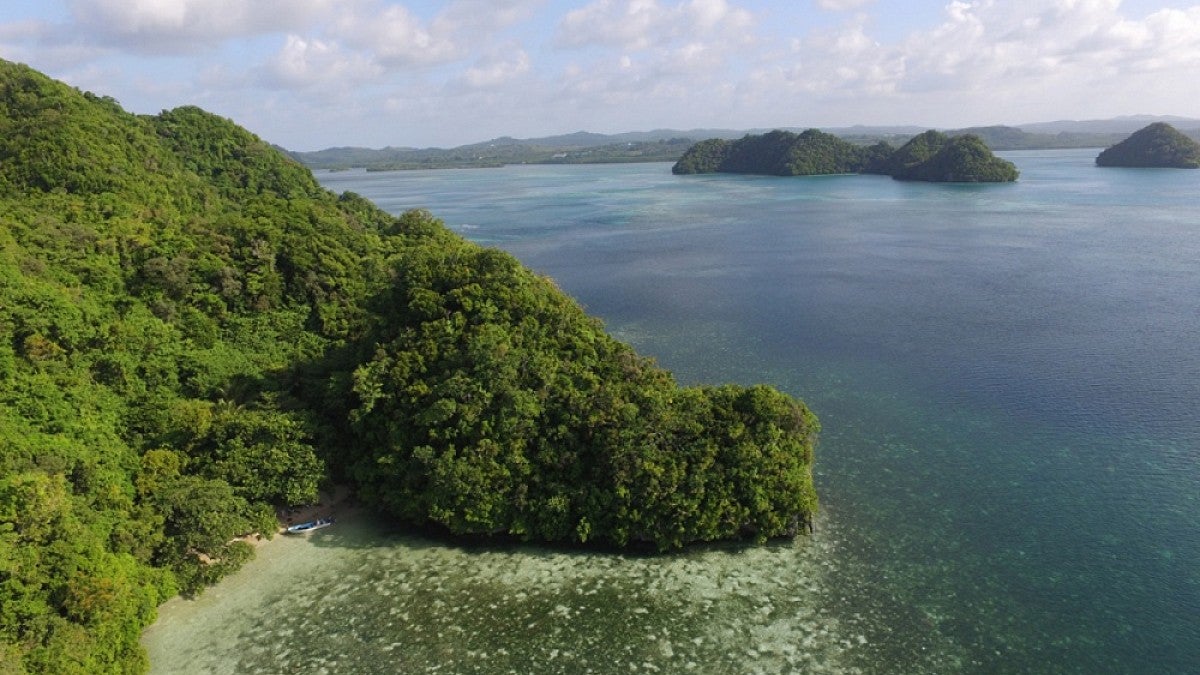Scott Fitzpatrick first traveled to Palau, a republic of islands 500 miles southeast of the Philippines, as a University of Oregon doctoral student in 1997. He’s since returned repeatedly, helping Palau unravel mysteries of its deep past and working alongside some 70 UO students.
His efforts have garnered a letter of thanks mailed from Palau’s president, Tommy E. Remengesau Jr., to UO President Michael Schill.
“The people of Palau are sincerely grateful for the assistance Dr. Fitzpatrick has provided us over two decades of work with our Palauan archaeologists,” Remengesau wrote. “His dedication and commitment to understanding our cultural heritage, training and working alongside Palauans, and presenting his research to a wider international community is something we highly value and respect.”
Specifically noted in the letter was the discovery by Fitzpatrick and his students of human remains dating back 3,000 years. The site, found in 2000 at a stone quarry on Orrak Island, is considered the oldest cemetery in Micronesia.
“This recognition coming from the president of a foreign country, and one in which I have worked for more than two decades, highlights the strong connection that archaeology faculty at the UO have had with indigenous communities in their research,” said Fitzpatrick, now a professor in the Department of Anthropology and associate director of the Museum of Natural and Cultural History.
The UO’s presence in archaeological research in the Pacific Rim dates back to Homer Barnett, who was the second faculty member in the Department of Anthropology. Barnett, a cultural anthropologist and expert on Pacific life, conducted field research in Palau in 1947-48.
“Professor Fitzpatrick’s work and collaboration in the Republic of Palau have had a lasting academic, cultural and historical impact,” Schill said. “I am pleased to be able to recognize his leadership not only in the field of anthropology, but also as a global scholar. I thank him for being such a great representative of the university.”
Fitzpatrick first went to Palau as a graduate student as part of the Micronesia and South Pacific Program run by Maradel Gale, now associate professor emerita in the School of Planning, Public Policy and Management. The trip formed the basis of Fitzpatrick’s doctoral dissertation as he focused on large disks carved in stone, known as Yapese money disks, that were among the largest such objects to be moved across open ocean by native Pacific Islanders.
Money disks were used for a variety of social transactions, from marriage gifts to political payoffs, Fitzpatrick said.
“The best part of my work there has been the close collaboration I have had with archaeologists and other staff from the Palau Historic Preservation Office to work on joint projects,” Fitzpatrick said. “President Remengsau is a world leader on environmental conservation and sustainability, having created the world's first shark sanctuary and the Palau Pledge, which requires visitors to support environmental protection of the islands.”
—By Jim Barlow, University Communications


